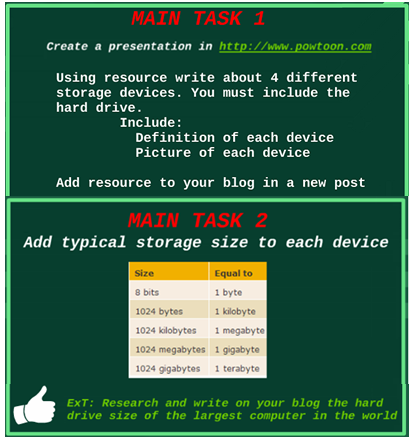Lesson Objectives
To understand the difference between Volatile and Non-Volatile Memory
To exlpain what Virtual Memory is and how it is created
Starter
Start a new Blog post entitled Memory - Volatile and Non-Volatile.Write a brief definition for each on your Blog to explain the difference between the two.
Useful website HERE
Main Tasks
Red Task
Add to the same blog post the following subheadings and answer the questions
1. ROM – non-volatile memory
- what’s so special about it?
-
where is it found?
- how
is it better than HDD or SSD?
2. RAM – volatile memory
-
where is it found?
-
what is SRAM and DRAM?
3. Virtual Memory
- what is it?
- how does it work?
4. Cache Memory
- where is it positioned?
- why is it so special?
Orange Task
Use your www.examtime.com account to make some flashcards for ROM, RAM, Volatile Memory, Non-Voltaile Memory, Virtual Memory and Cache Memory.
Work through the DRAG and DROP Exercises HERE
Extension Task:
What is meant by the terms Static RAM(SRAM) and Dynamic RAM(DRAM)















